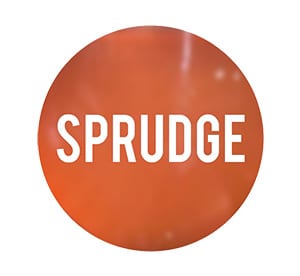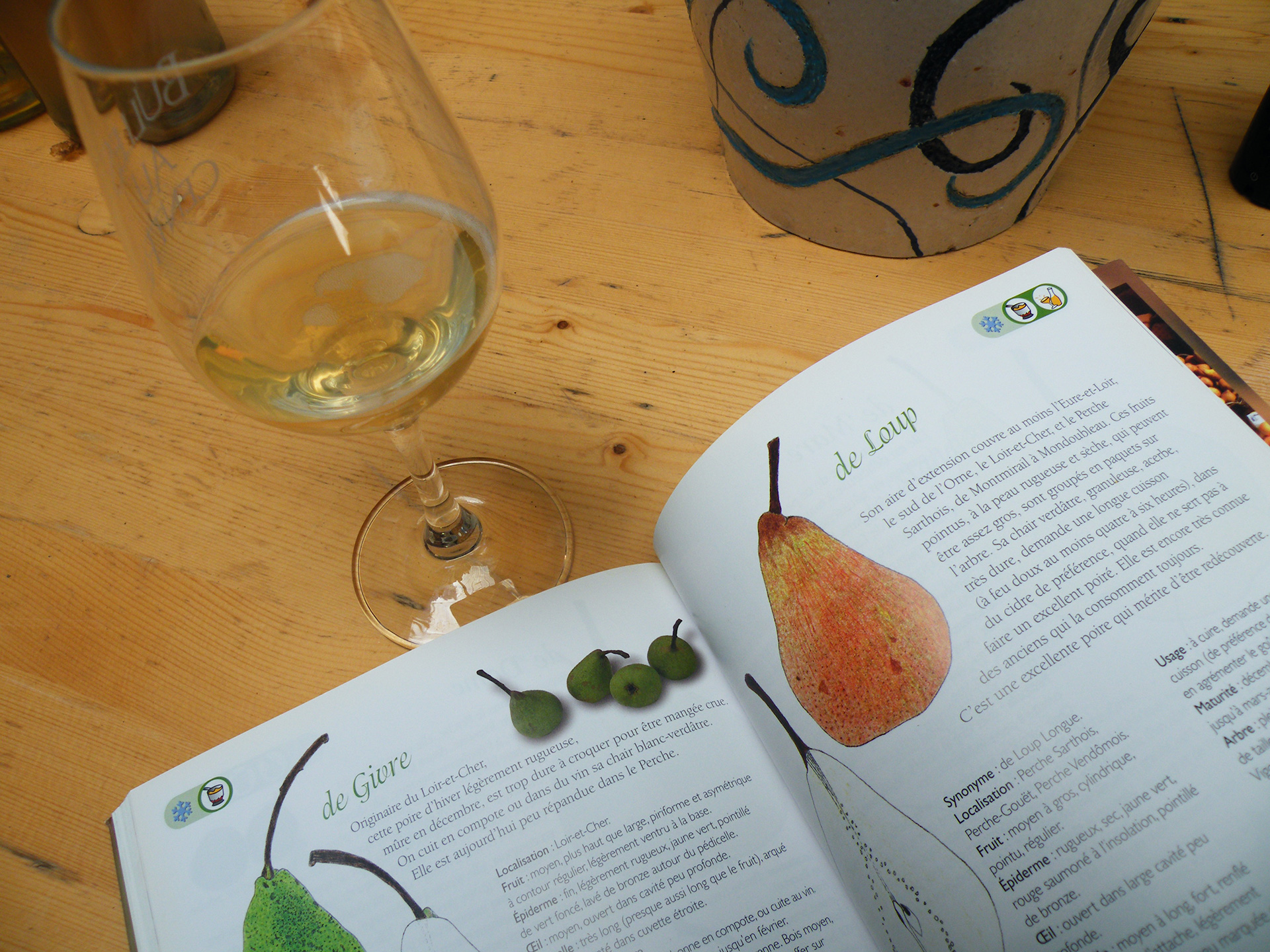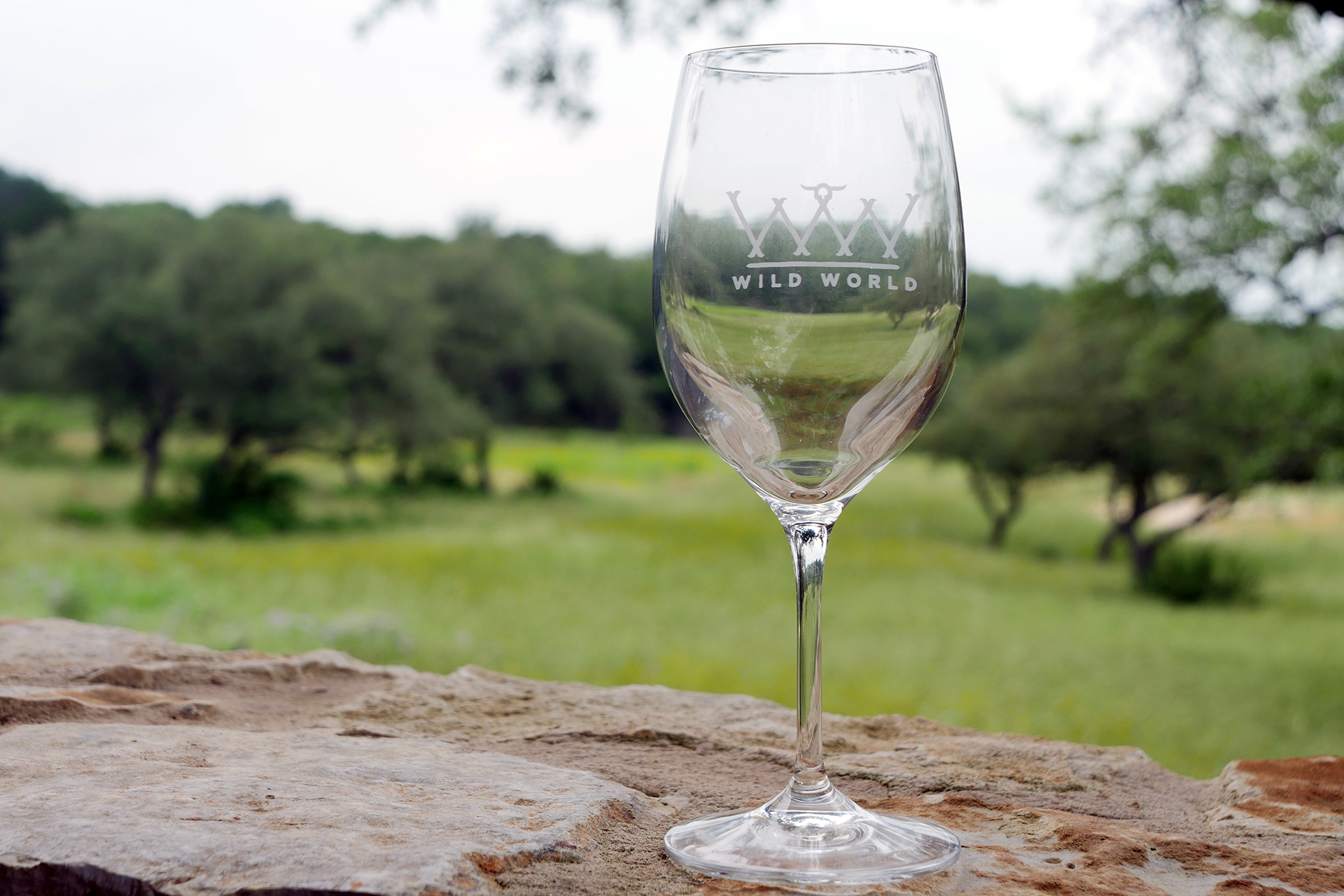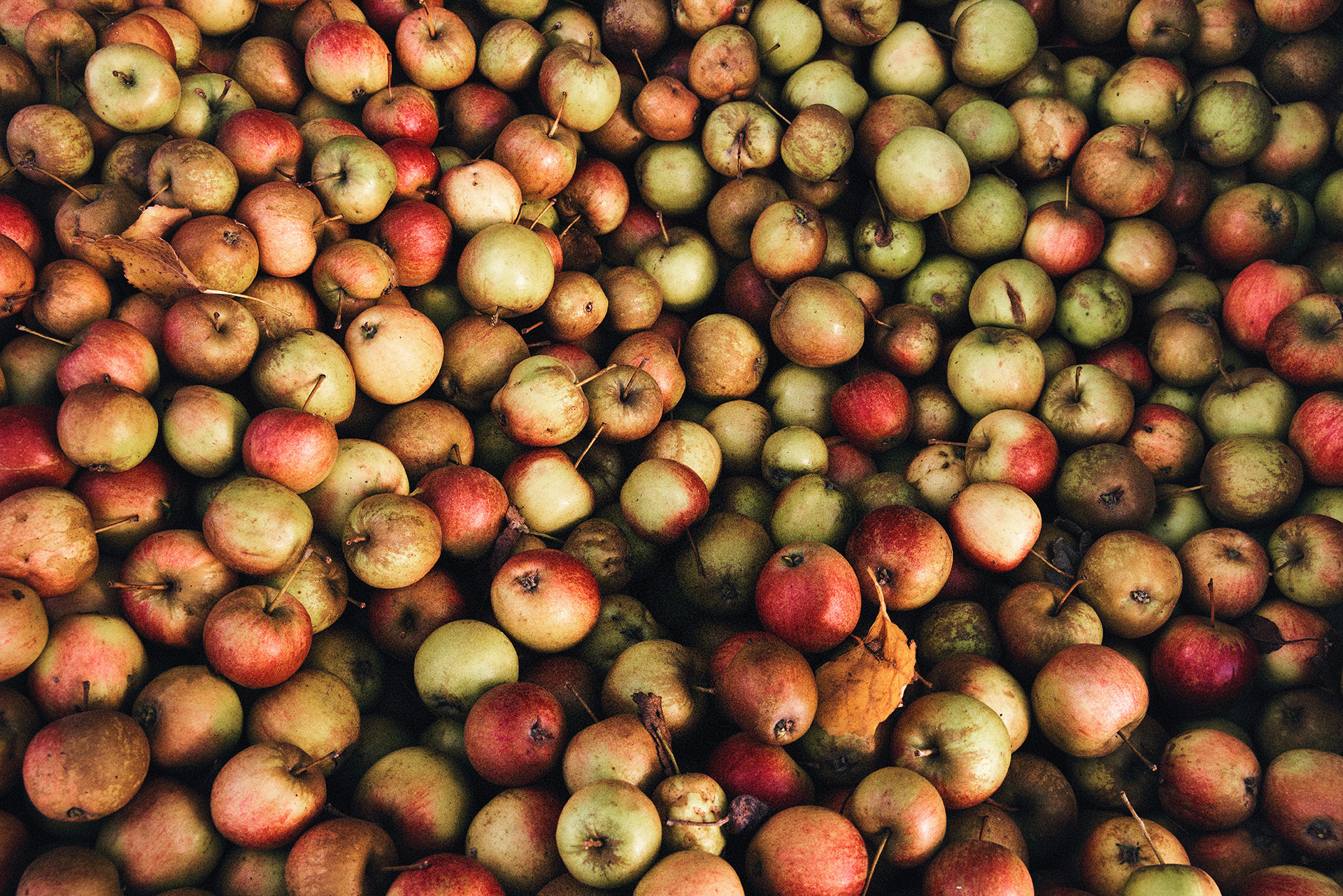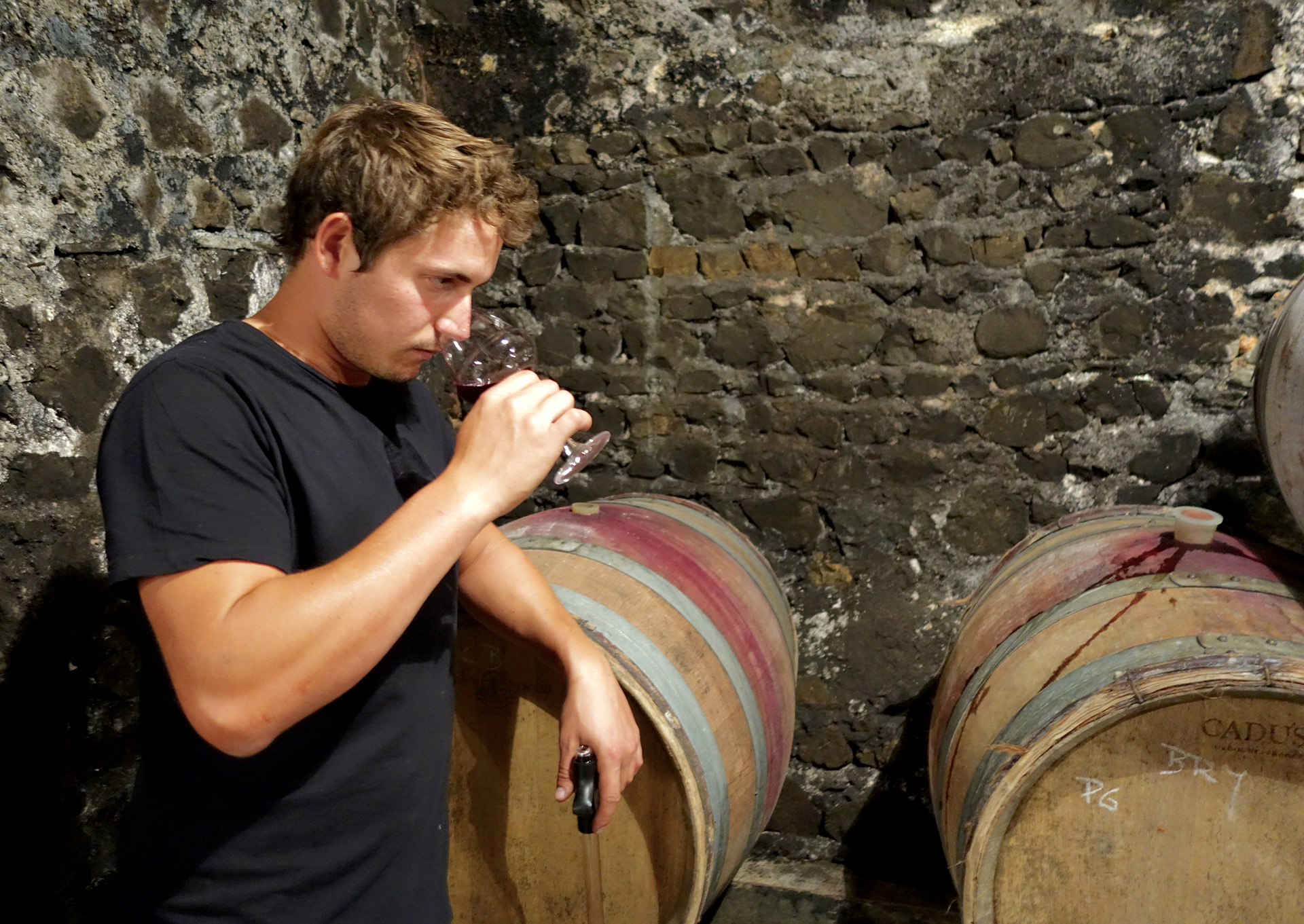
After two years of releasing tiny quantities of his own cult cru Beaujolais, young Côte de Brouilly winemaker PIERRE COTTON is taking the reins of his 10-hectare family domaine. No one is better-equipped to show the world a closer look at the terroir of Mont Brouilly.
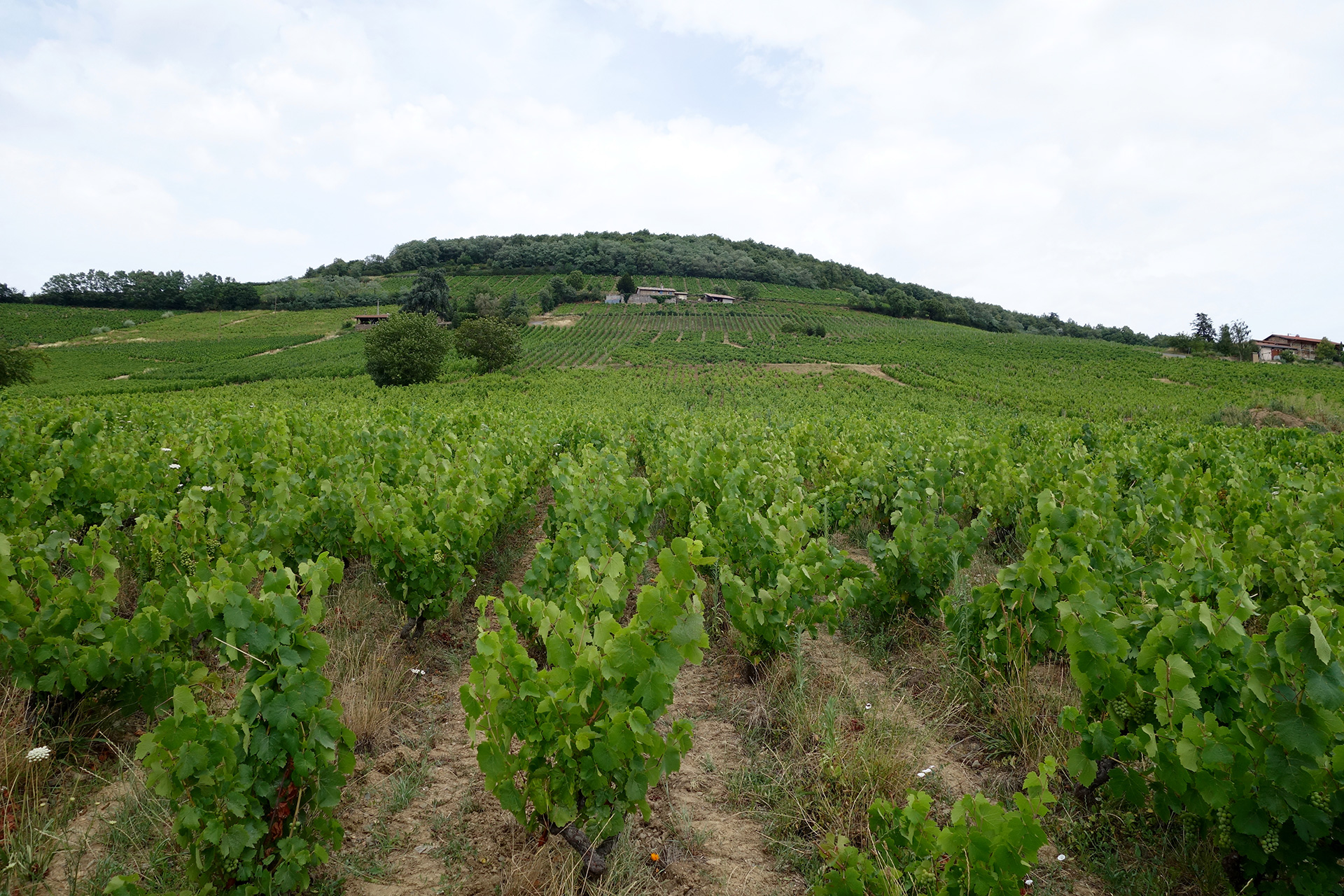
Young Beaujolais winemaker Pierre Cotton’s spacious family cellar lies on the south side of Mont Brouilly, the stray mountain of the central Beaujolais that lends its names to two cru appellations: Côte de Brouilly, for the mountainsides themselves, and Brouilly, for the low surrounding hills. Laughter bounces off the cellar’s old oak foudres; I’ve joined in on a tasting with some prospective German clients, as Cotton recalls the initial label proposition for one of his 2016 releases.
“My US importer said, ‘It’s impossible! It’s two children getting completely drunk in a field!” he relates, before clarifying, “It wasn’t children! It was angels!”
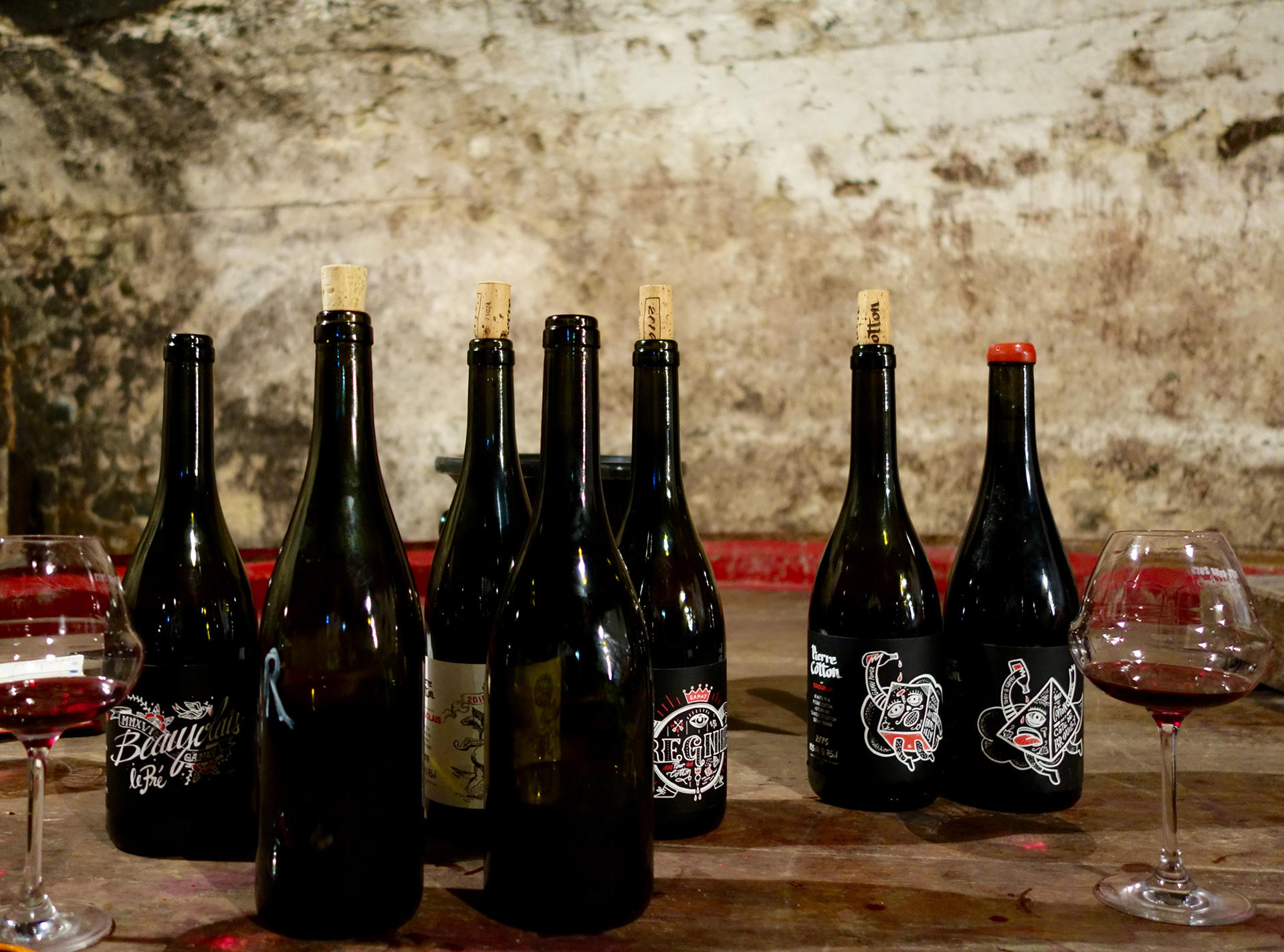
Cotton has a lot of new labels to manage this year. Previously he’d made only two micro-cuvées, with the bulk of his family’s production vinified by his father, Guy Cotton, and sold on the private market in France as Domaine Sanvers et Cotton. But in 2016 Guy Cotton experienced health troubles, leaving Pierre to vinify and commercialise the entirety of the family’s 10 hectares, which are in the process of organic certification.
This year Cotton fils is releasing no less than six cuvées: his original Côte de Brouilly “100% Cotton,” a barrel-aged Côte de Brouilly from the “Les Grillées” lieu-dit, along with wines from Brouilly, Régnié, and two cuvées of Beaujolais tout court (“just-Beaujolais.”) All are made in the masterful natural vinification style he debuted back in 2014: whole cluster, semi-carbonic fermentation with low to zero sulfur use, before aging in foudre and barrel and bottling without filtration. The result is a panoramic new perspective on the terroir of the Côte de Brouilly and beyond.
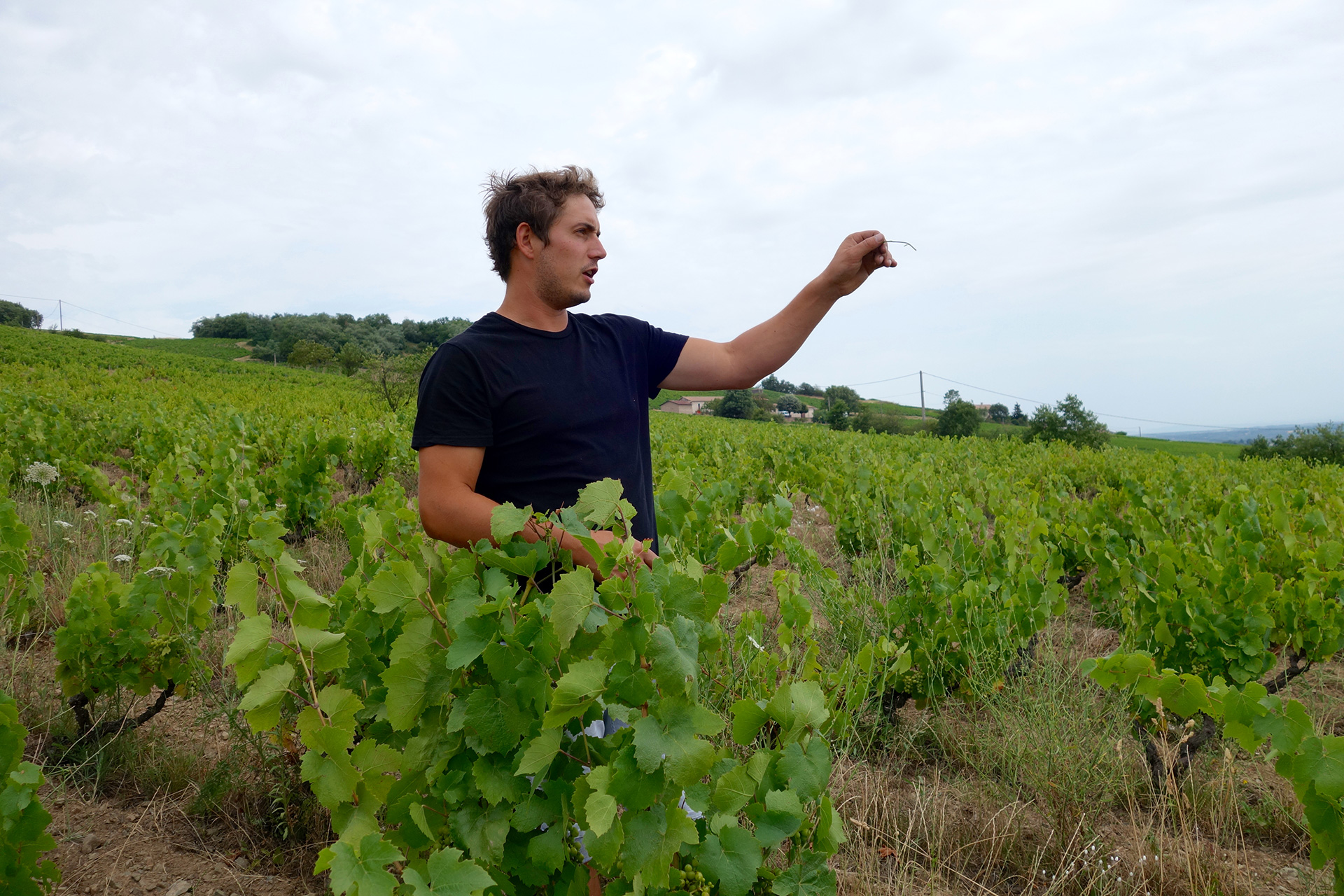
Young, bright, and inclined to organic agriculture, Pierre Cotton was already a rarity on the Côte de Brouilly, an appellation that, until recently, has paradoxically suffered from its own historical esteem. Within the region, the flanks of Mont Brouilly have been known as great terroir since time immemorial, with the result that vineyard holdings have remained largely amassed amid the big châteaux, whose style of vinification and marketing tends conservative, if not quasi-industrial. Cotton’s own cellar used to house four separate winemakers sharecropping land that all belonged to the Château de Pierreux. One by one they retired, and Pierre’s parents purchased the cellar, focusing, even then, on more terroir-driven winemaking.
“There are three faces of the Côte de Brouilly,” Cotton explains as we taste. “You have the basalt-based blue stone, the granite, and a flinty rock we call la corne verte. There’s truly a big difference between them.”
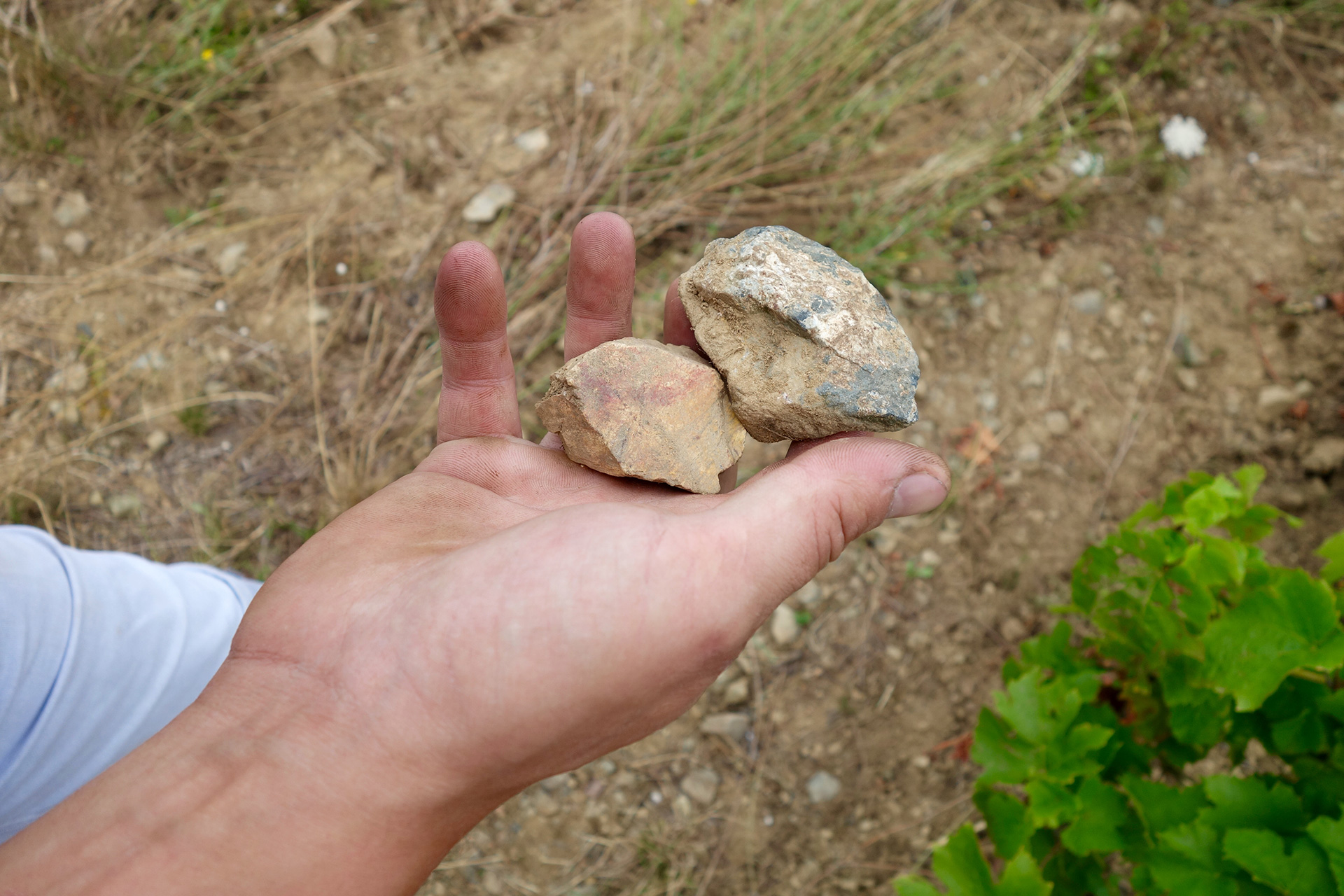
Coming to grips with the terroir of Mont Brouilly remains a challenge for anyone. Château Thivin, the pioneering domaine of the Geoffray family and longtime qualitative beacon of the appellation, produces a cuvée blended from across their 25ha expressly for their US importer, Kermit Lynch. Thivin’s parcel cuvées—some excellent, all fascinating—don’t see US import, and undergo filtration for the French market. The past few years have seen a circle of natural winemakers begin to make a mark on the Côte de Brouilly, often from purchased grapes: Jean-Claude Lapalu, Raphael Champier, Rémi Dufaitre, Marcel Joubert, and France Gonzalvez. Joining their ranks this year are Villié-Morgon’s Guy Breton and Alex Foillard, both of whom produced Côte de Brouilly wines in 2016.
But Pierre Cotton stands alone in his generation as the sole natural winemaker actually from the Côte de Brouilly—5th generation, no less —with longtime experience with some of its greatest sites, from “L’Héronde” to “Les Grillées.” And not necessarily just its greatest sites, as he reveals in the course of a tasting from the foudres lining his cellar.
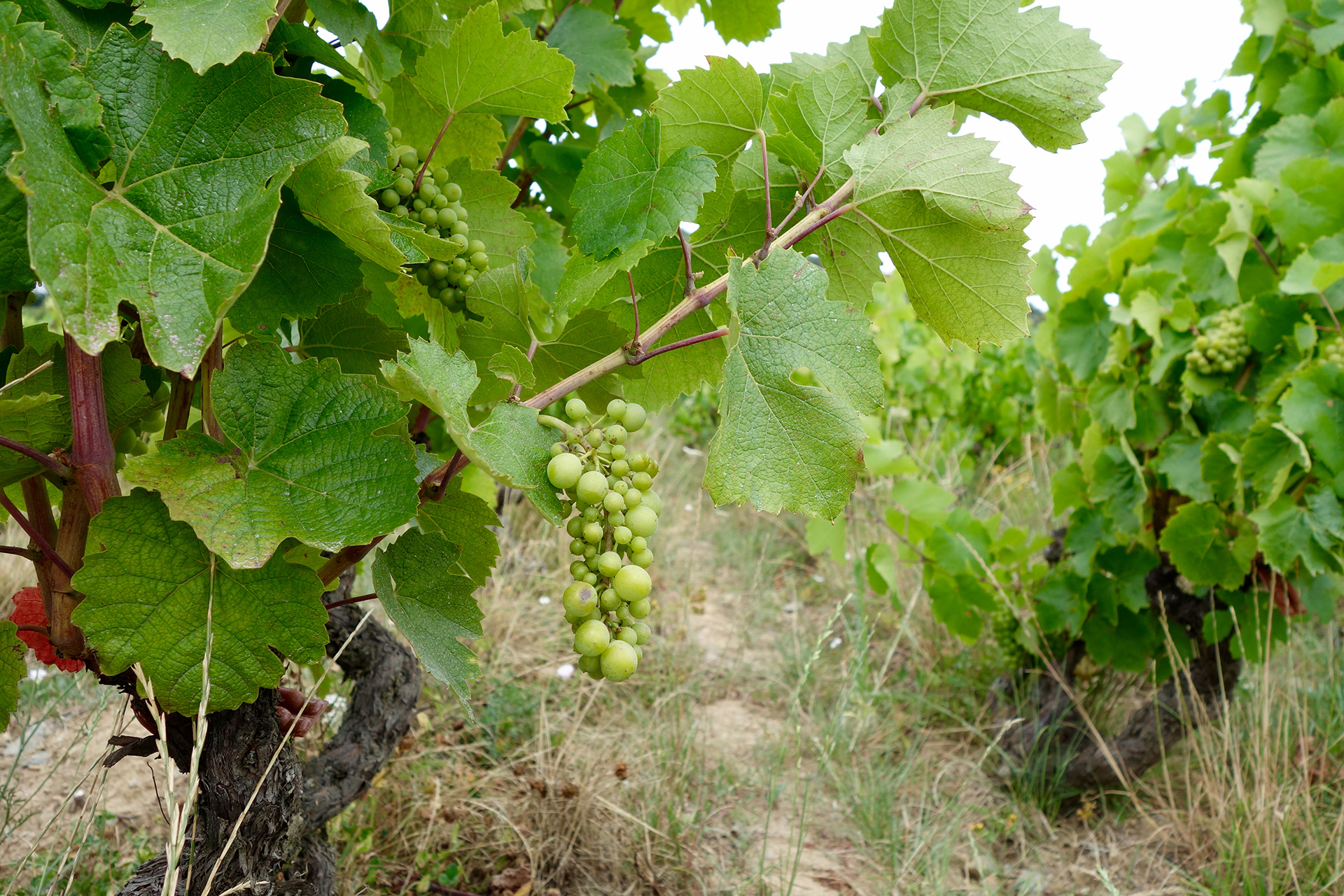
“Have you tasted this? It’s bizarre,” he says, gesturing to one chalked-up foudre. “This will keep the name Domaine Sanvers et Cotton.” The wine has nothing in common with Cotton’s other Côte de Brouilly wines. It is pale, almost tannin-free, lighter than a glimmer of winter sun. As with everything Cotton produces, its character is the result of a search for the best compromise between circumstance, technique, and terroir.
“The fruit was harvested in the rain,” he explains, “It’s from way high-up in the lieu-dit ‘La Glacière.’”
In French, La Glacière means “the icebox.” It’s an altitudinous, north-facing site, yielding the lower-maturity fruit one might expect. One never sees “La Glacière” specified on wine labels. In the hands of other winemakers, its fruit is typically blended with fruit from richer parcels, if not thermovinified.
“We decided to make something very easy-to-drink with it.” Cotton mimes the knocking-back of a glass of wine—an international gesture, but one with positive connotations in the world of natural Beaujolais. He says he plans to bottle some of the wine from “La Glacière” early for a concert he’s hosting in his driveway that weekend. Talented winemakers distinguish themselves in any number of ways, but a sure one is the clear expression of terroir in even their simplest wines. Here Cotton had intended to make a party wine, and wound up, as if by accident, revealing another hidden facet of the Côte de Brouilly.
After the tasting, Pierre and I motored over to the cherished local wine bistro, Le XVIII sur Vin in Belleville-sur-Saône, where I posed him a few questions for Sprudge.
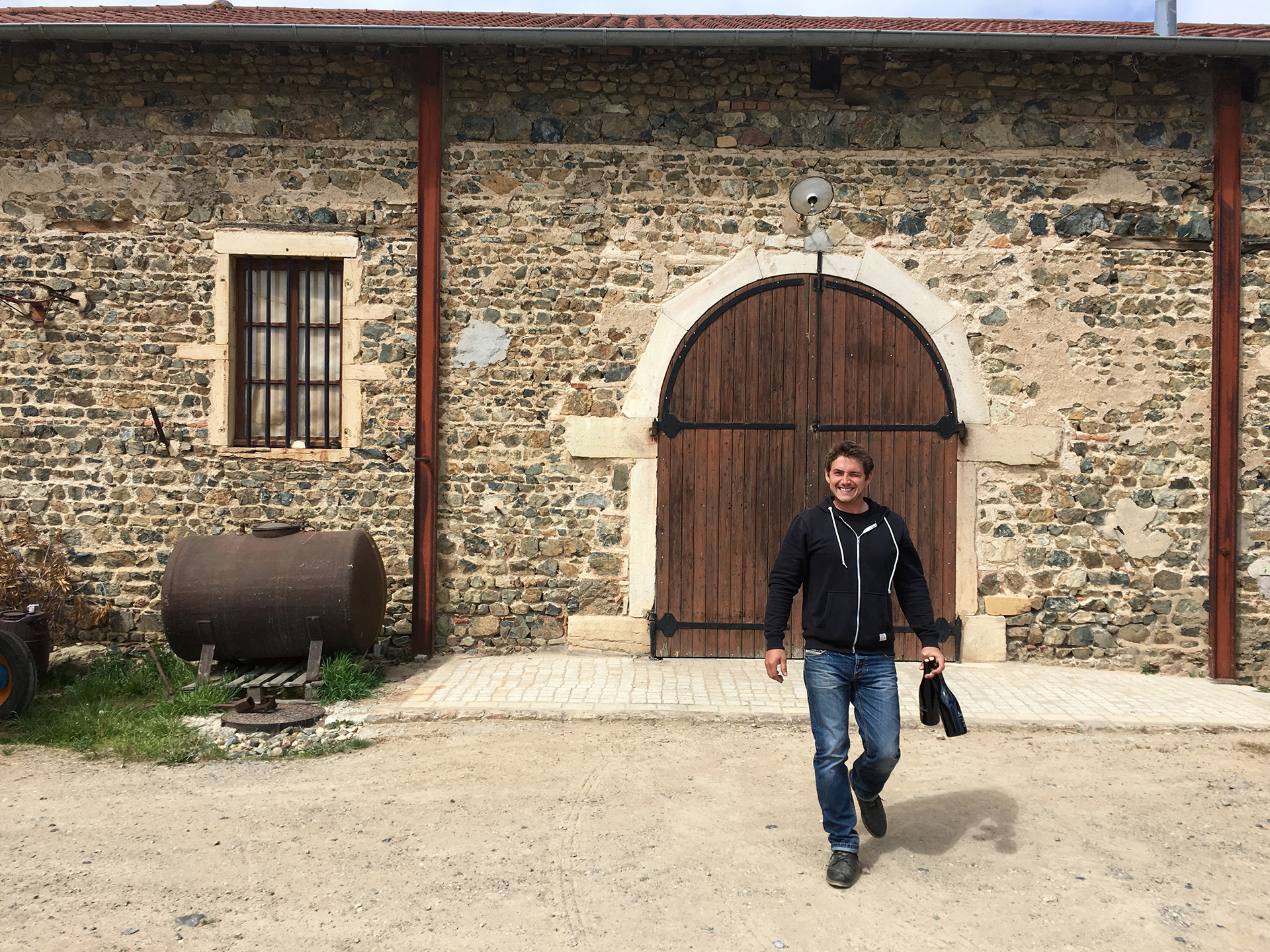
What’s the history of your family on the Mont Brouilly?
It’s been five generations. At its base, the domaine is on the Sanvers side of my family. The Sanvers came here in 1856. They were sharecroppers—at the time everyone was in sharecropping. What’s quite rare is that my family never moved, from generation to generation. Before sharecroppers used to moved a lot. If there was a plot that opened up in a château that was better placed, families moved. Us, we always stayed here.
My grandfather Jean Sanvers died very young, an accident during fireman training exercises at Château de la Chaize. So it was my grandmother who took the domaine, it was in 1976. It was not often that you had women running domaines at that time. Then it was my mother, with my father.
When did you decide to pursue winemaking?
I stopped being a mechanic in 2009. I was 20. It’s nice, but at a certain point, you ask yourself if you want to stay all your life in a garage working on motorcycles.
And at that time my father wanted to stop working vines. He was fed up. So for a year in 2010, I worked for my family without being paid. Later, I went to go work in the Loire with Yves Guegniard, a friend of my fathers.
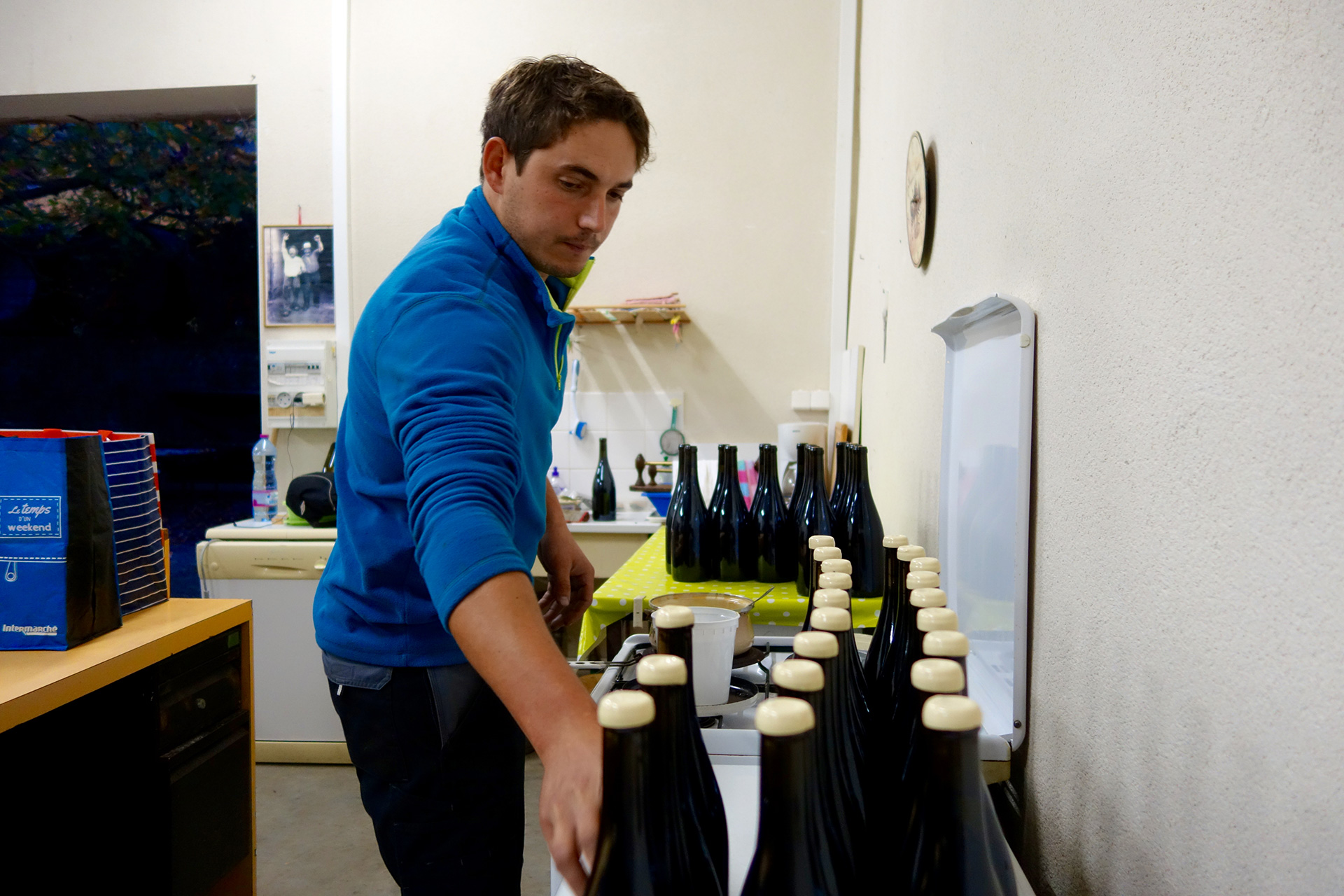
When you started working with your father, did you already have an awareness of natural wine?
Vaguely—like a lot of winemakers, I think. They knew Marcel Lapierre and Jean Foillard by name. But I’d never tasted the wines. At the time we didn’t drink much natural wine—we’d start the evenings with whisky and Coke!
Jules Métras was one of the first I met. And Kéké Descombes, then Yann Bertrand. I used to be around Fleurie because I used to go out with a girl in Lancié. We’d get drunk at the village parties and then Jules would invite us to his cellar. Each time we’d cross paths it was a big moment.
I got more into it when I left the Lycée Bel-Air in 2011. I’d begun to taste natural wines in the Loire, at the Auberge de Layon in Rablay-sur-Layon.
Did anything you learned in the Loire affect your winemaking in the Beaujolais?
Yves Guegnard is a perfectionist, very precise in what he does. But no, there it was mostly whites, sweet wines, and rosés. You can’t do that here, it’s not possible. We have the true Beaujolais technique, the Lapierre way: natural yeast, no sulfur, strict carbonic maceration and all that. I learned that here. My mother and my father really helped me too, of course.
Then, what I do is nothing like what the others here do. I don’t have the technique of chilling (Pre-refrigeration of grapes before vatting). Then there are some winemakers who don’t touch the grapes at all. Whereas on the Côte de Brouilly, at the end of fermentation, I do a delestage (rack-and-return).
When I discuss with the gang, you know, everyone has their own way of doing it. In the north of the Beaujolais, if you had one terroir that you divided into four between Jules and Yann and Kéké and me, you’d have four different wines.
Thank you.
Aaron Ayscough (@a_ayscough) is the author of the wine blog Not Drinking Poison In Paris. His writing about wine and restaurants has appeared in The Financial Times, The New York Times: T Magazine, and Fantastic Man. Read more Aaron Ayscough on Sprudge Wine.
